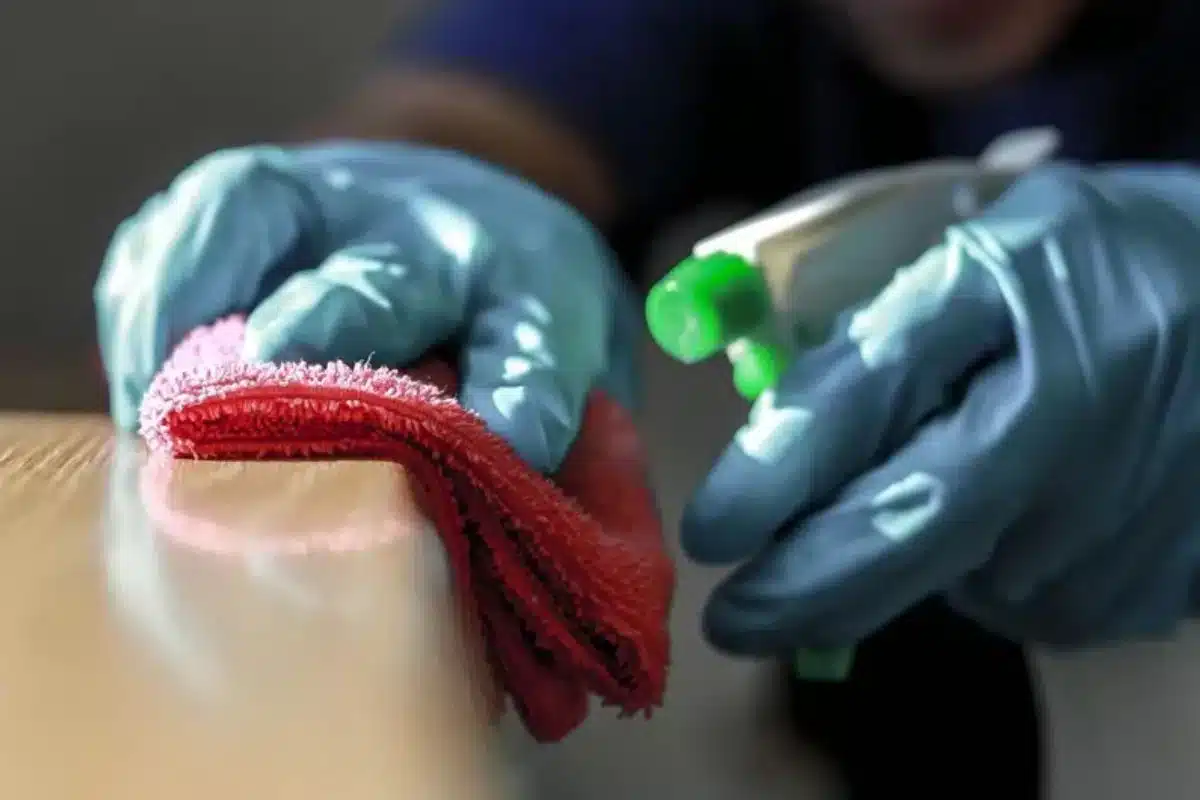Kitchen hygiene extends far beyond wiping down countertops and scrubbing dirty dishes. Many homeowners meticulously sanitize their cooking surfaces while completely ignoring one of the most bacteria-laden spots in their culinary space. This frequently touched yet rarely cleaned area harbors dangerous microorganisms that can compromise your family’s health. Understanding which surfaces require attention and implementing proper cleaning protocols will transform your kitchen into a safer environment for food preparation.
Hidden bacterial hotspots in modern kitchens
Light switches represent one of the most overlooked contamination sources in contemporary kitchens. These small surfaces experience constant contact from multiple family members throughout the day, yet they receive minimal cleaning attention. Each time someone enters the kitchen with dirty hands, flips a switch while handling raw meat, or touches the surface after using the restroom, bacteria accumulate on these plastic or metal plates.
The problem intensifies during meal preparation when cooks frequently move between different tasks. Consider the typical cooking sequence : washing vegetables, handling raw poultry, adjusting lighting, checking seasonings, and returning to food preparation. This cycle creates multiple opportunities for cross-contamination between food and surfaces. Harmful pathogens like Salmonella and E. coli can survive on light switch surfaces for several days, creating ongoing health risks.
Beyond switches, other frequently touched areas demand similar attention. Cabinet handles, refrigerator doors, and appliance controls accumulate comparable bacterial loads. These surfaces connect directly to food storage and preparation areas, making their cleanliness crucial for preventing foodborne illnesses. Just as knowing how long does hummus keep in the refrigerator helps maintain food safety, understanding surface contamination risks protects your household from invisible threats.
Research indicates that kitchen light switches can harbor more bacteria than toilet seats, making them genuine health hazards. The combination of frequent touching, minimal cleaning, and proximity to food preparation creates ideal conditions for microbial growth. Addressing these overlooked areas requires shifting our cleaning perspective from visible dirt to invisible contamination.
Establishing effective weekly cleaning protocols
Creating a systematic approach to switch cleaning ensures consistency and effectiveness. Begin by gathering appropriate supplies : microfiber cloths, disinfectant solution, cotton swabs, and clean towels. Safety remains paramount when cleaning electrical fixtures, so always ensure your hands and cleaning materials are only slightly damp, never soaking wet.
The cleaning process should follow these essential steps :
- Power off the circuit at the breaker for maximum safety
- Remove loose debris with a dry cloth
- Apply disinfectant to cloth, not directly to switch
- Gently wipe all surfaces including switch plate edges
- Use cotton swabs for detailed crevice cleaning
- Dry thoroughly with a clean microfiber cloth
- Restore power after complete drying
Timing your cleaning routine strategically maximizes effectiveness while minimizing disruption. Many homeowners find success incorporating switch cleaning into their regular weekly kitchen deep-cleaning sessions. This approach ensures the task doesn’t get forgotten while maintaining the consistent schedule necessary for preventing bacterial buildup.
Natural cleaning solutions offer effective alternatives to commercial products. A mixture of equal parts white vinegar and water provides excellent disinfecting properties without harsh chemicals. For households concerned about cleaning product ingredients, understanding what is eat cleaner made of helps make informed decisions about surface sanitizers. These natural options work particularly well for families with young children or individuals with chemical sensitivities.
Comprehensive kitchen surface hygiene management
Expanding your cleaning focus beyond light switches creates a more thorough approach to kitchen sanitation. Multiple high-touch surfaces require regular attention to maintain optimal hygiene standards. Cabinet knobs, drawer pulls, appliance handles, and control panels all accumulate similar bacterial loads through daily use.
Different surfaces require varying cleaning frequencies based on their contact levels and contamination risks. Daily-use items like refrigerator handles and faucet controls need more frequent attention than weekly-use switches. Developing a rotation schedule ensures all surfaces receive appropriate care without overwhelming your cleaning routine.
The location of switches and controls influences their contamination risk significantly. Switches positioned near sinks or food preparation areas face higher bacterial exposure than those in dining areas. Similarly, controls on frequently used appliances like microwaves and dishwashers require more attention than decorative lighting switches. Just as implementing simple DIY solutions can address household problems, targeted cleaning approaches solve specific contamination challenges.
Incorporating these practices into your existing routine creates sustainable habits without adding significant time or effort. Most homeowners discover that regular maintenance actually reduces overall cleaning time by preventing heavy bacterial buildup. Consistent weekly attention eliminates the need for intensive scrubbing sessions while maintaining superior hygiene standards throughout your kitchen space.

